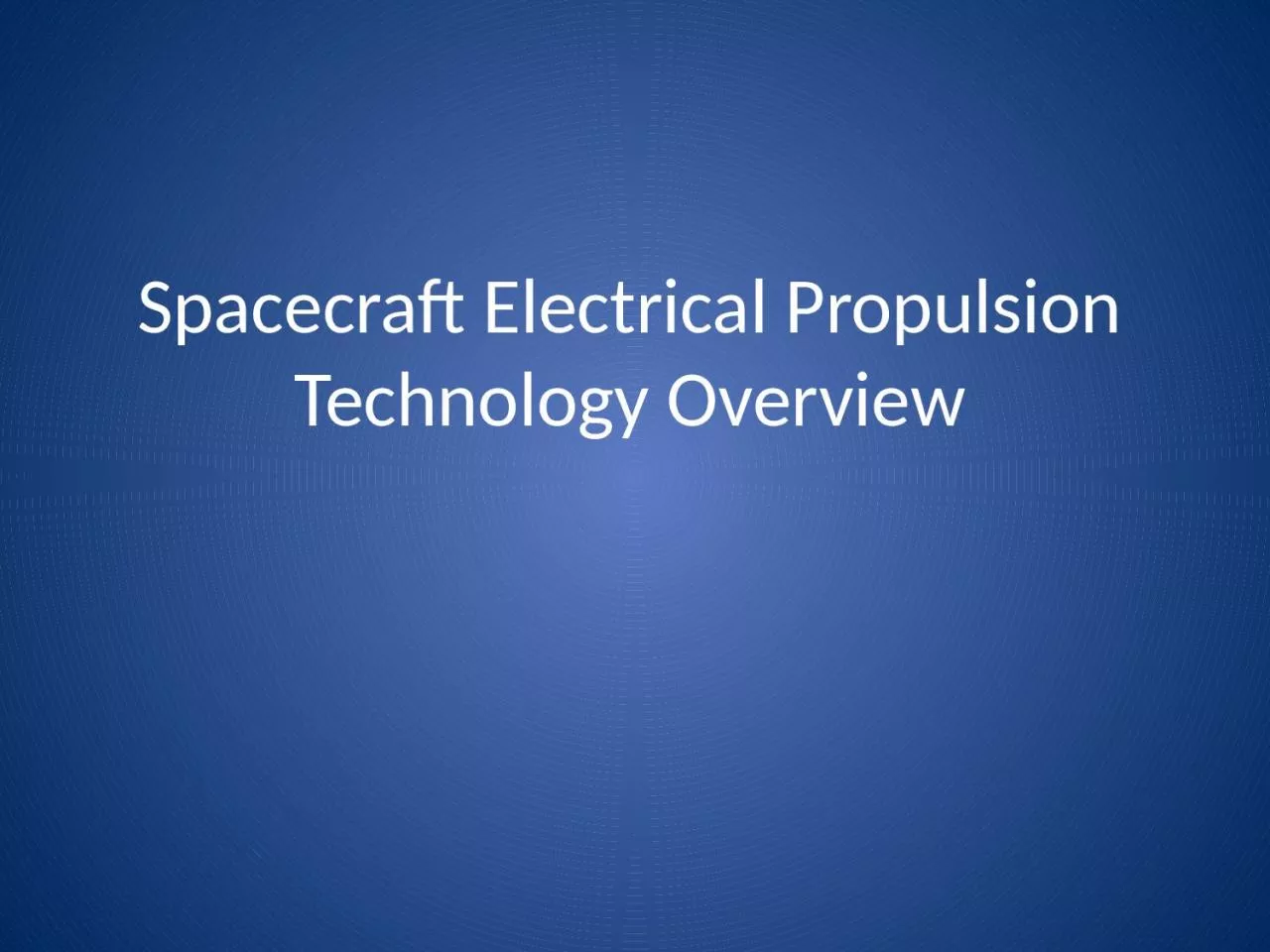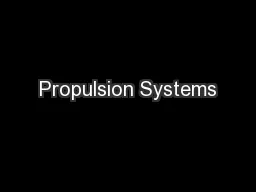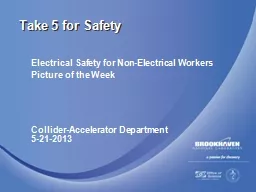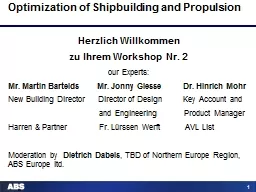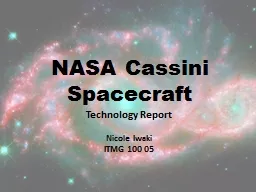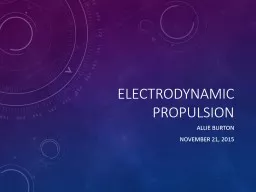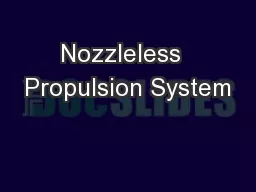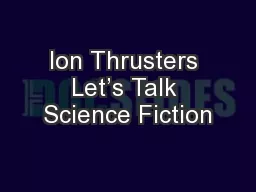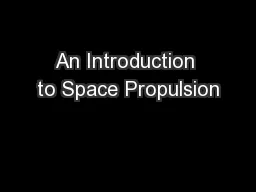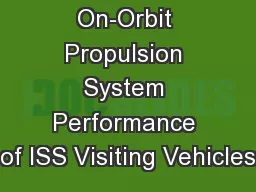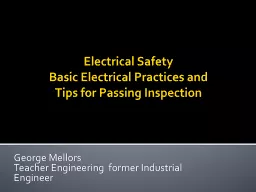PPT-Spacecraft Electrical Propulsion Technology Overview
Author : payton | Published Date : 2023-11-08
Electric Propulsion Definitions Electric propulsion EP any propulsion system which uses electrical power to provide propellant acceleration and hence thrust
Presentation Embed Code
Download Presentation
Download Presentation The PPT/PDF document "Spacecraft Electrical Propulsion Technol..." is the property of its rightful owner. Permission is granted to download and print the materials on this website for personal, non-commercial use only, and to display it on your personal computer provided you do not modify the materials and that you retain all copyright notices contained in the materials. By downloading content from our website, you accept the terms of this agreement.
Spacecraft Electrical Propulsion Technology Overview: Transcript
Download Rules Of Document
"Spacecraft Electrical Propulsion Technology Overview"The content belongs to its owner. You may download and print it for personal use, without modification, and keep all copyright notices. By downloading, you agree to these terms.
Related Documents

